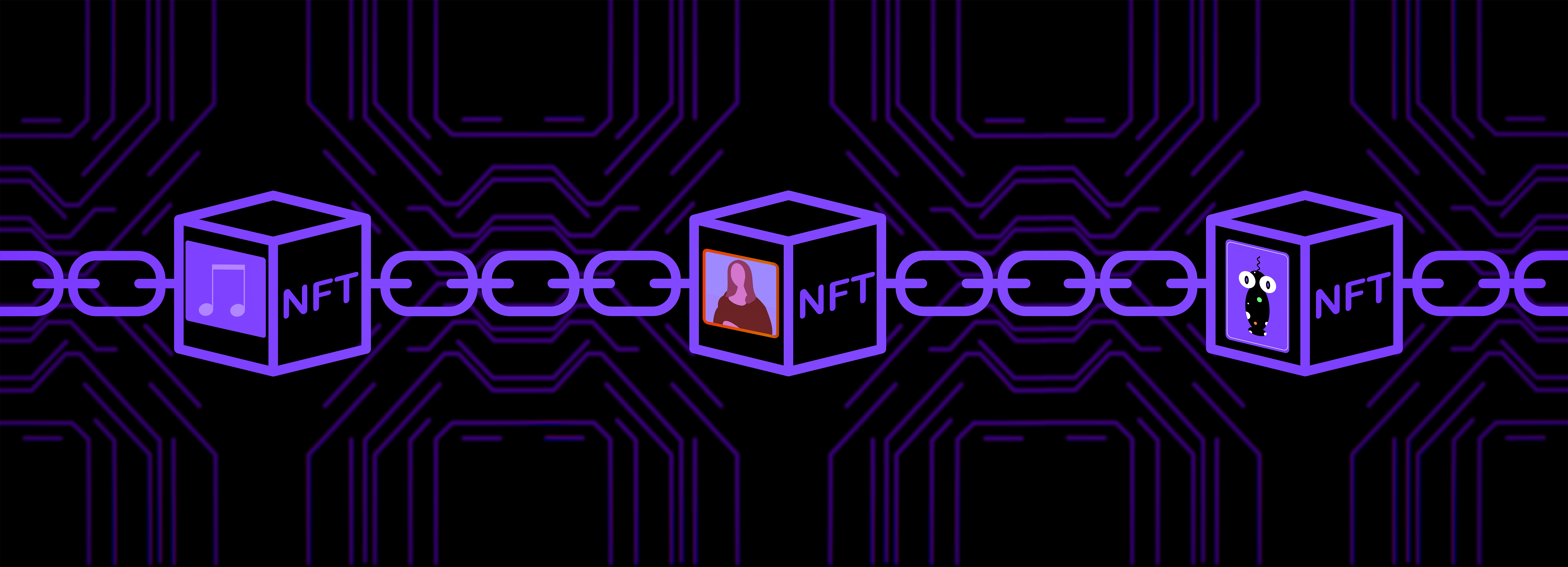Explosive gains have brought the skeptics out of the woodwork en masse. Some folks with good intentions are making some great points that we should all be taking into consideration in order to make the industry more robust and sustainable, others are misinformed, everyone is passionate.
I’ll address some of the biggest misconceptions I’ve been hearing, and I’ll update this article as I see new points being made. I love doing research and responding to comments! If you see anything in this (or any of) my articles that you think is incorrect, please call me out on it.
Now for the FUD.
If your token uses IPFS then it will disappear.
Recently a thread has been passed around NFT Twitter like a burning hot potato that nobody wanted. I’m posting a link to the thread so you can read it for yourself, but I’ll summarize the talking points below, and let you know why your IPFS-backed NFTs aren’t going to magically disappear.
Long story short, it’s incredibly expensive and impractical to store media on-chain. Even before gas prices shot through the roof a couple months ago, there were very few projects that stored their media content on chain, and the media they stored was very limited.

The most popular projects in the NFT space use IPFS to host their images. CryptoPunks, which trade for millions of dollars by the most respected collectors in the space, use IPFS to host even those tiniest of pixelated images.
Infinity Tokens, the highest regarded on-chain white label contract creation platform in the space, leverages IPFS with Arweave in order to guarantee rendering with the “goal of being everlasting.”

This is not something that they are trying to hide, it’s right on their homepage because there is nothing wrong with this, the media behind IPFS hashes, as long as they are referred to properly and in a redundant way, are not as ephemeral as @jonty‘s thread makes them sound.
IPFS is currently the gold standard for storing media content with regards to NFTs, and for a very good reason. While it’s true that if a minting platform (think Rarible, Mintable, SuperRare, etc) stops paying for IPFS hosting, the media behind those hashes will become unavailable, it’s possible to ‘heal’ the media behind these hashes if a party chooses to do so, even if they are not the original contract owner. This is unlike a www domain, where if it expires and someone scoops it up, they have full control over it.
IPFS, as long as it’s referred to properly from the token, is a perfectly acceptable solution for storing media content indefinitely.
Ethereum Is The Wrong Blockchain
While Bitcoin is the most secure blockchain due to the amount of processing power it’s afforded by the computers it’s network is run on, Ethereum is the most powerful (and therefore the most secure) blockchain which can execute meaningful smart contracts. If a malicious actor attains more than 51% of the processing power of a blockchain it can create tokens with impunity and reverse transactions. This is less likely with Ethereum than other blockchains that you can mint NFTs on.

While no one can predict the future, right now, in terms of decentralization, ongoing development, security, and longevity, Ethereum is the clear winner, there is not even a close second. This is in a large way why tokens minted on Ethereum change hands at significantly higher prices than those on alternative blockchains.
Don’t get me wrong, there are a lot of really cool projects in the space, but Ethereum is the Queen, and she will reign for the foreseeable future.
You’re Killing The Environment, Stop it!
Let’s be honest, this is a tough one. The crypto industry uses a ton of electricity, and the folks looking towards a greener future are pushing us in the right direction, and they should not be cast aside as relentless fudders.

There is nothing specific that minting and trading NFTs are doing that is expending any more electricity than the Ethereum blockchain running as a whole. The part that costs the most electricity is the mining aspect, or showing “Proof of Work” this expends an enormous amount of electricity in order to keep the entire blockchain secure.
Your NFTs are an afterthought when miners are making the decision to turn on or off their mining rigs. Miners are making the decision to turn on or off their rigs based on simple (not really) math, and it’s basically this
$(Current Price of Ether) – $(Current Cost to Mine Ether, in Electricity) = $(Profit)

Miners are not in the business to speculate (although some do,) they have bills to pay, big ones, and they for the most part sell their Ether immediately after mining it. Your CryptoPunks are not on their mind.
NFT related transactions on the Ethereum blockchain are a drop in the bucket compared to the rest of the network activity.
Now that we understand that Ethereum as a whole, and not specifically NFTs, is what is (for lack of a more eloquent way to put it) bad for the environment, what can we possibly do to mitigate the environmental damage, are people even working on this?
Ethereum 2.0, which is already being rolled out, will reduce Ethereum’s carbon footprint to near zero. Without going into the complexities (don’t worry, you can read some of the complexities of Ethereum 2.0 here) Ethereum is basically switching from Proof of Work, to Proof of Stake, which means instead of proving miners spent a lot of electricity to secure the blockchain (yuck!) Miners now will need to prove that they have staked a certain amount of Ether to breathe life into the blockchain instead. If the miners act maliciously, they lose their stake. This concept is already used in less mature blockchains (EOS, Cardano, Tezos) and it has been working well. Satoshi got the ball rolling with Proof of Work, but simply put, we have now found a better way to transact with minimal trust.
It’s Not Real Art
Go fuck yourself 🙂
You can just right-click & save
Sure, but you can also walk up to the Mona Lisa and take a picture with your phone.

When NFT collectors buy tokens, they aren’t doing so because they want to view them, they are doing it so that they have control of how the token which was minted in the creating transaction exists on the blockchain. Only the owner of the address where the token lives is able to move it. That token is signed by the artist, and is very easy to check.
Viewing the art is not a concern. If anything, the fact that everyone can view and appreciate artwork stored on the blockchain makes it that much more rewarding. Collectors can now easily showcase their holdings for everyone to enjoy.
Have you ever lugged priceless pieces of artwork through a hot and crowded NYC subway to bring them to an auction house only to be told that they can’t verify their authenticity? Maybe I have a special connection to the ease of verifying authenticity on the blockchain by simply checking the minting transaction on etherscan because of personal history with art, but to me I’m positive, due to the ease of verification and transfer of artwork, this is simply a much better way of doing things.
It’s a Pyramid scheme
No, it’s not. A pyramid scheme is a business model that recruits members via a promise of payments or services for enrolling others into the scheme, rather than supplying investments or sale of products. As recruiting multiplies, recruiting becomes quickly impossible, and most members are unable to profit.
Guilty as charged. I’ve told my friends about crypto art, and even suggested that they buy certain tokens as investments because they would likely accrue in value. The point that crypto art skeptics are making with the pyramid argument is that since now my friends have bought in, my art will sell for more money, so how is that not a pyramid scheme?
This is not a pyramid scheme, it’s organic market growth through word of mouth.